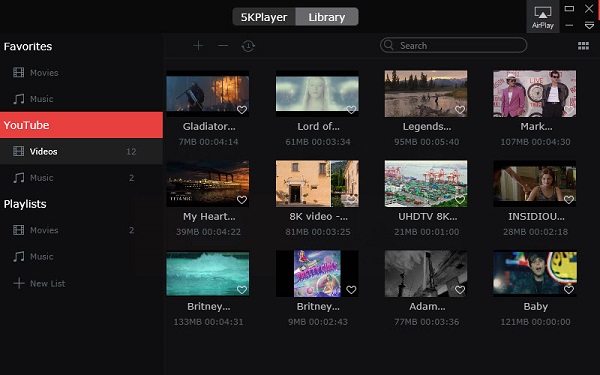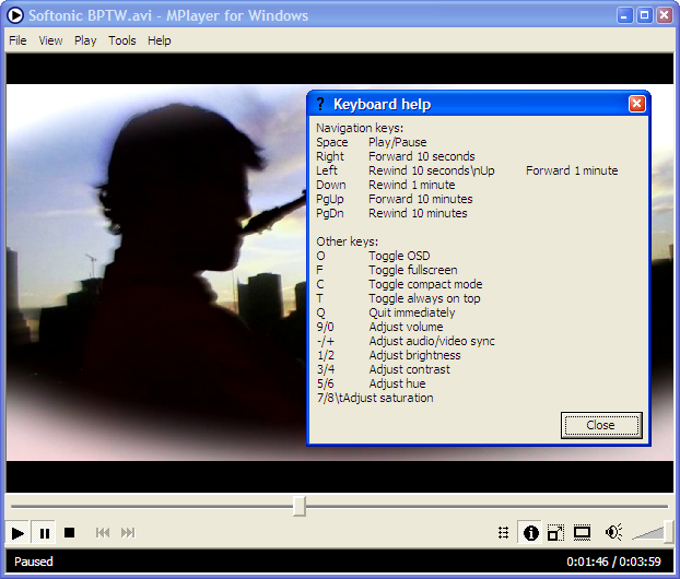

MPlayer, MPlayer2 and mpv all use incompatible EDL formats. Since June 2015, mpv has worked to relicense its code as LGPL v2.1 or above. Mpv is a GPLv2-licensed fork of mplayer2. There have been no subsequent stable releases. The first release, 2.0, was published in March 2011. The developers also indicated intentions to enable MPlayer2 to use libav as an alternative to ffmpeg. The main changes from MPlayer were improved pause handling, Matroska support, seeking, and support for Nvidia VDPAU enabling multithreading by default and the removal of MEncoder, the GUI interface, and various video drivers and bundled libraries, such as ffmpeg, relying instead on shared libraries. Mplayer2 was a GPLv3-licensed fork of MPlayer, largely the work of Uoti Urpala, who was excluded from the MPlayer project in May 2010 due to "long standing differences" with the MPlayer Team.

It can also be used to display TV from a TV card using the device tv://channel, or play and capture radio channels via radio://channel|frequency. MPlayer can also use a variety of output driver protocols to display video, including VDPAU, the X video extension, OpenGL, DirectX, Direct3D, Quartz Compositor, VESA, Framebuffer, SDL and rarer ones such as ASCII art (using AAlib and libcaca) and Blinkenlights. Protocols: RTP, RTSP, HTTP, FTP, MMS, Netstream ( mpst://), SMB, ffmpeg:// (Uses FFmpeg's protocol implementations).Image formats: BMP, JPEG, MNG, PCX, PTX, TGA, TIFF, SGI, Sun Raster.Subtitle formats: AQTitle, ASS/SSA, CC, JACOsub, MicroDVD, MPsub, OGM, PJS, RT, Sami, SRT, SubViewer, VOBsub, VPlayer.

Audio formats: AAC, AC3, ALAC, AMR, DTS, FLAC, Intel Music Coder, Monkey's Audio, MP3, Musepack, RealAudio, Shorten, Speex, Vorbis, WMA, Bink.Video formats: Cinepak, DV, H.263, H.264/MPEG-4 AVC, HuffYUV, Indeo, MJPEG, MPEG-1, MPEG-2, MPEG-4 Part 2, RealVideo, Sorenson, Theora, WMV, Bink.Container formats: 3GP, AVI, ASF, FLV, Matroska, MOV (QuickTime), MP4, NUT, Ogg, OGM, RealMedia, Bink.Physical media: CDs, DVDs, Video CDs, Blu-ray discs.MPlayer can play many formats, including: MPlayer being run via command line in Microsoft Windows. MPlayer can play a wide variety of media formats, namely any format supported by FFmpeg libraries, and can also save all streamed content to a file locally.Ī companion program, called MEncoder, can take an input stream, file or a sequence of picture files, and transcode it into several different output formats, optionally applying various transforms along the way.Ī variety of command-line parameters allows changing the appearance of the player, including -speed, -af scaletempo for changing audio speed while maintaining the pitch, -ss (start at _ seconds), -sb (start at _ bytes), -endpos (stop playing at _ seconds), -novideo for only playing the audio track of a video, and -loop for looping. There are various SIP blocks that can accelerate video decoding computation in several formats, including PureVideo, UVD, QuickSync Video, TI Ducati and others. MPlayer was previously called "MPlayer - The Movie Player for Linux" by its developers but this was later shortened to "MPlayer - The Movie Player" after it became commonly used on other operating systems. The MPlayer G2 project was abandoned, and all the development effort was put on MPlayer 1.0. Gereöffy was soon joined by many other programmers, in the beginning mostly from Hungary, but later worldwide.Īlex Beregszászi has maintained MPlayer since 2003 when Gereöffy left MPlayer development to begin work on a second generation MPlayer. The first version was titled mpg12play v0.1 and was hacked together in a half-hour using libmpeg3 from After mpg12play v0.95pre5, the code was merged with an AVI player based on avifile 's Win32 DLL loader to form MPlayer v0.3 in November 2000. The original author, Hungarian Árpád Gereöffy, started the project because he was unable to find any satisfactory video players for Linux after XAnim stopped development in 1999. ( June 2012)ĭevelopment of MPlayer began in 2000. Please help update this article to reflect recent events or newly available information. This article's factual accuracy may be compromised due to out-of-date information.


 0 kommentar(er)
0 kommentar(er)
